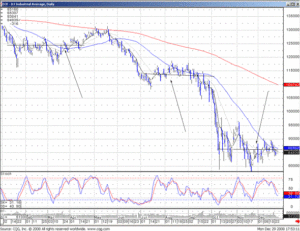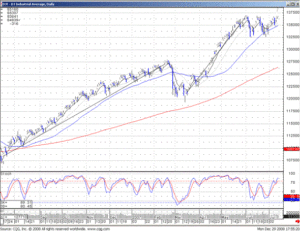This market is an auction market in which participants buy and sell commodities and/or futures contracts. They buy and sell on a specified upcoming date. In other words this market requires a financial contract that obligates a buyer to purchase an asset and a seller to sell an asset at as a financial instrument or physical commodity at a predetermined upcoming date and price. Some contacts may call for the physical delivery of the asset, while other contracts are settled in cash. In fact, the likelihood of physical delivery of a commodity is extremely low.
In this market an investor can hedge or speculate on the price movement of the underlying asset. For instance, hedging is to make an investment to reduce the risk of adverse price movements in an asset. An example is to own stock and then sell a contract stating that you will sell your stock at a set price. You then are able to avoid market fluctuations.
This type of contract is standardized and the upcoming date of delivery is called the delivery date or the final settlement date. The official price of the contract at the end of the day’s trading session on the exchange is called the settlement price for that day of business.
This type of contract gives the holder the obligation to make or take delivery under the terms of the contract, whereas options trading, grants the buyer the right, but not the obligation to establish a position previously held by the seller of the option. For example, if you were long in a contract, you could go short the same type of contract to offset your position. This would serve as your exit position just like selling a stock in the equity markets would close a trade.
The owner of an options contract may exercise the contract, but both parties of a futures contract must fulfill the contract on the settlement date. As stated above, the seller delivers the underlying asset to the buyer, or if it is a cash-settled contract, the cash is transferred from the future trader who sustained a loss to the one who made the profit. In order to exit the commitment prior to the settlement date, the holder of the position must offset their position by either selling a long position or buying back (covering) a short position, thus effectively closing out the position and contract obligations.
There is a lot more to this market and every investor should do their homework before trading commodities. Continue to research and find a trading strategy that works for you.
Market Direction
The holidays usually do not provide a major direction for the markets. Most traders are gone. The simple techniques provided by candlestick signals reveal the same information in lethargic markets as they do in active markets. The market is currently moving sideways. There does not seem to be any urgency to buy, yet no urgency to sell. This has been the market conditions for most of 2008. There has been many weeks/months for the market did not have any tradable trend. However, 2008 was a relatively profitable year. Although there were times when the markets were not moving, when the markets did move, some huge profits were made. This is why it is important to let the markets tell you what the markets are doing.

DOW 2008
There were numerous periods where the Dow just went sideways, making it difficult to make money either long or short. Unlike the trends we saw in late 2006 going into 2007. Being able to analyze the market trends allowed for exploiting profits by being positioned correctly

DOW 2009
One of the main functions of candlestick analysis is to discover what patterns are occurring. This becomes extremely important in how to trade the market. The power of candlestick signals is incorporated in the ability to analyze what investor sentiment is producing. There will be some big profits to be made in 2009. Where are they going to be? That we do not know! But taking advantage of the information that is built into candlestick signals will allow us to place funds in the markets at the right places at the right times.
Chat session tonight for members only 8 PM ET
Good investing,
The Candlestick Forum Team
Online Training Sessions with Stephen Bigalow
Group size is limited; Sessions fill quickly – Pre-register early
Speak Your Mind